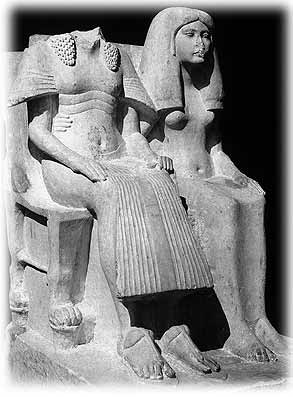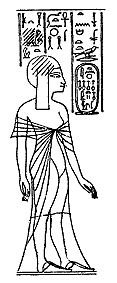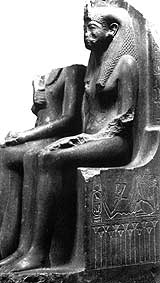|
|
 |
|
|
Horemheb's first wife - the lady Amenia.
(Left: an early statue of Horemheb and Amenia). |
 |
|
|
 |
|
|
Horemheb's first wife - the lady Amenia.
(Left: an early statue of Horemheb and Amenia). |
 |

Mutnodjmet,
Horemheb's second wife
Also buried in Shaft IV, bones thought to have been hers were
collected around the rim of the shaft leading underground. Tomb
robbers had dragged the mummy from her tomb up to the pillared
courtyard it is thought to search for valuables. The bones were
of a woman in her mid-forties (she had lost all her teeth while
still alive), deep scars on her pelvis shows that she had possibly
died in childbirth - other bones found were of a newborn child
or a foetus.
Who was Mutnodjmet?
She was thought to have been the sister of Queen Nefertiti, a person having royal links who Horemheb would need to marry in order to validate his right to the throne (however in his book 'The hidden tombs of Memphis' Geoffrey Martin point out that Horemheb's wife was the sister of Nefertiti, or indeed if she was then it still was not necessary for him to marry her as she did not have 'royal blood'). She first appears in some of the early tomb reliefs at Amarna (she appears most in the tomb of her probable father - Ay), she is shown wearing a side-lock of hair and is thought to have been slightly older than her niece Meritaten (she sometimes also shown accompanied by two dwarfs). She is only seen in the earlier years of Akhenaten's reign, the next time she re-appears is on a coronation statue of Horemheb.
 |
 |